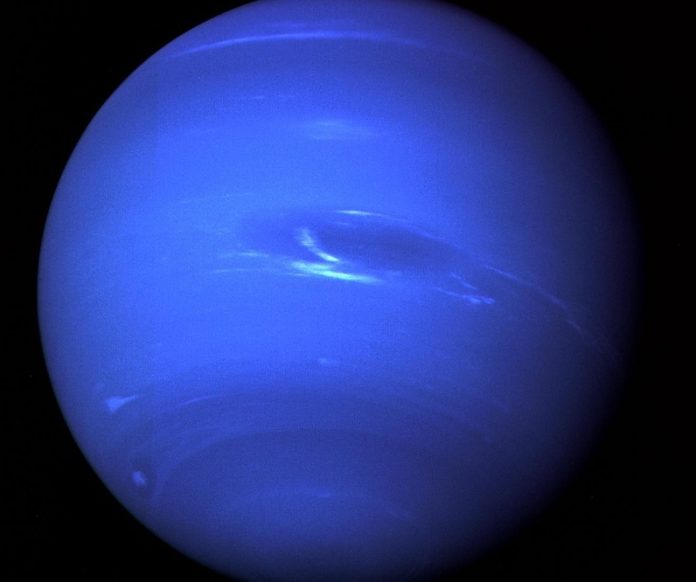
Astronomers have recently uncovered a new and intriguing feature in the distribution of exoplanets, called the “Neptunian Ridge.”
This discovery, made by an international team including scientists from the University of Geneva, NCCR PlanetS, and the Centro de Astrobiología, provides new insights into the complex dynamics of exoplanet formation and evolution.
Their findings are published in the journal Astronomy & Astrophysics.
When astronomers study the vast array of exoplanetary systems, they often create charts that plot planets according to their size (radius) and how long they take to orbit their stars (orbital period).
These charts reveal interesting patterns, showing where different types of planets are commonly found—and where they are not.
One of the most puzzling areas on these charts is the “Neptunian Desert.” This is a region where Neptune-sized planets are surprisingly scarce, even though planets of other sizes are more common.
Scientists believe that this scarcity is due to the intense radiation from nearby stars, which strips away the atmospheres of these planets, making them smaller and less detectable.
Beyond this harsh region lies the “Neptunian Savanna,” a zone where Neptune-sized planets are more commonly found. In this area, conditions are less severe, allowing these planets to hold onto their gaseous atmospheres and survive in their orbits.
Understanding how these regions are formed and maintained has been a key question in the study of exoplanets.
The new study shines a light on the transition zone between the Neptunian Desert and the Savanna. The researchers discovered an unexpected concentration of Neptune-sized planets at the edge of the Neptunian Desert, a feature they have named the “Neptunian Ridge.”
“We found an overdensity of planets in this region, indicating a sharp transition between the barren Neptunian Desert and the more populated Neptunian Savanna,” explained Dr. Vincent Bourrier, an assistant professor at the University of Geneva’s Astronomy Department and a co-author of the study.
This ridge represents a critical area where planets have migrated closer to their stars while resisting the intense radiation that typically strips away their atmospheres.
How the Neptunian Ridge was discovered
The discovery was made possible by analyzing data from NASA’s Kepler mission.
The researchers used advanced statistical techniques to correct for observational biases, allowing them to map out the “period-radius” space of these exoplanets with great precision.
This analysis revealed distinct regions that define the Neptunian landscape, including the newly identified Neptunian Ridge.
The Neptunian Ridge was found at orbital periods between 3.2 and 5.7 days, right between the Neptunian Desert and the Neptunian Savanna. This detailed mapping highlights the intricate processes involved in the migration and survival of these planets in close proximity to their stars.
The discovery of the Neptunian Ridge provides crucial insights into how planets form and evolve. It suggests that some Neptune-sized planets are brought to this region through a process called high-eccentricity migration. This type of migration likely occurs later in the planets’ lives, allowing them to survive the harsh conditions near their stars.
These migration processes, combined with the effects of stellar radiation (photoevaporation), shape the distinct features observed in the Neptunian landscape. Interestingly, the Neptunian Ridge shows similarities to another feature in exoplanet distribution known as the “hot Jupiter pileup,” indicating that similar evolutionary processes might influence both groups of planets.
To delve deeper into the mysteries of the Neptunian Desert and Savanna, a team led by the University of Geneva has launched a large-scale observational program using the ESPRESSO spectrograph on the Very Large Telescope in Chile. This program aims to study the orientation of planetary orbits in a sample of close-in Neptunes, providing critical data to understand the origins and evolution of these intriguing worlds.
“The Neptunian Ridge is just the beginning,” said Amadeo Castro-González, a Ph.D. student at the Center for Astrobiology in Madrid and the study’s lead author. “With upcoming results from this observational program, we’ll be able to test our hypotheses about these planets, offering a more complete picture of the Neptunian landscape.”



